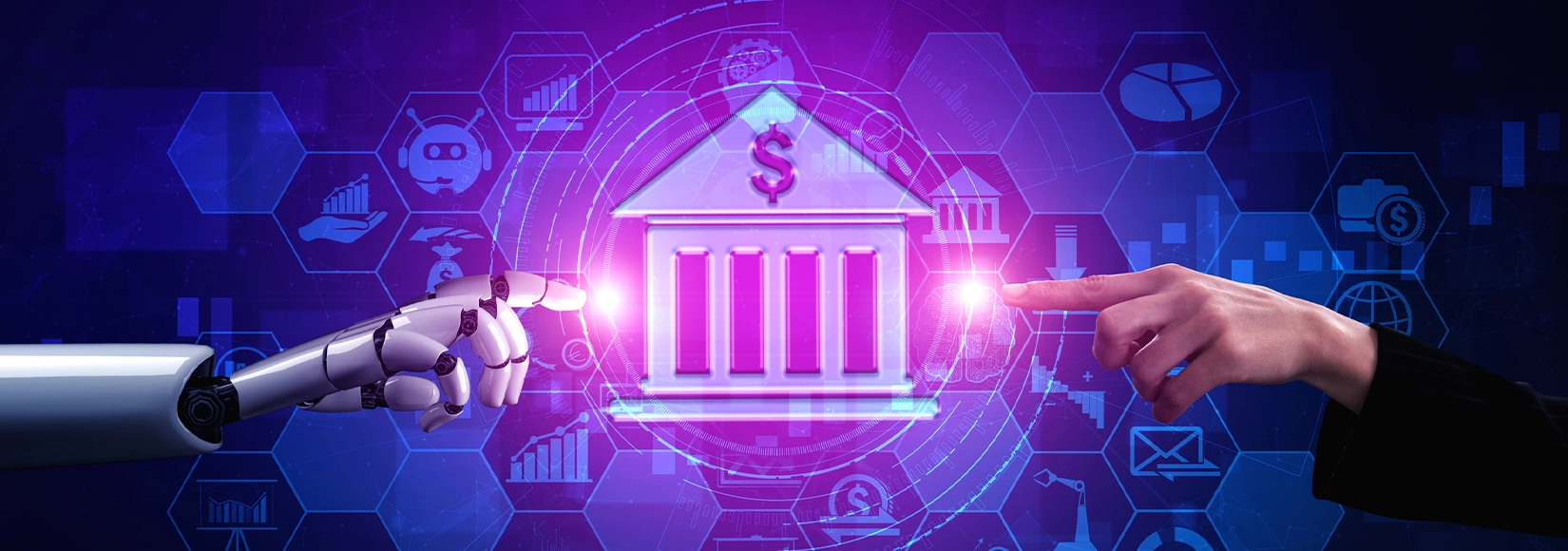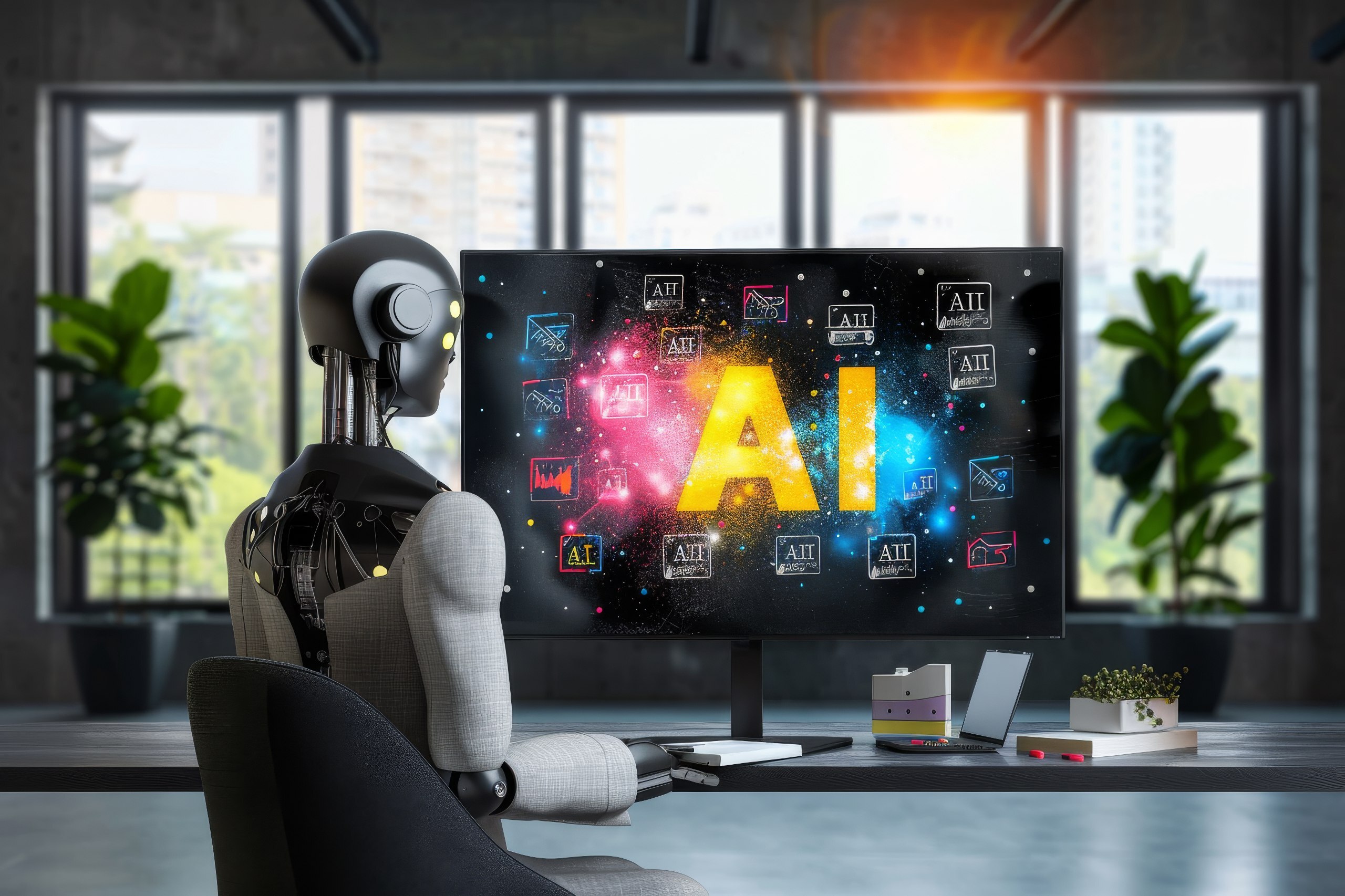According to Statista, the global market size of AI has jumped nearly about 50 billion in the USA from 2023 and has reached beyond 184 billion U.S. dollars in 2024. Moreover, this market is expected to cross 826 Billion U.S. dollars in 2030.
The above stats clearly indicate that artificial intelligence is taking over the world at a very fast pace, and soon, it will not be a choice but a crucial need to integrate AI into the systems for businesses.
In this blog, we will talk about how to build an AI app from scratch, features, and use cases of AI apps across different industries.
Introduction to Artificial intelligence
Artificial intelligence is the branch of computer science known to put human cognitive abilities like abstract thinking, analytics, problem-solving, and decision-making into machines.
AI is integrated into almost every app used these days, and it has revolutionized operations in various industries. With the coming of AI, most of the tasks have been streamlined and automated, which has pushed this already fast-paced world.
Today, with the help of natural language processing (NLP), people can talk with computers; they now want personalized services, quick solutions, advanced problem solving, and do not waste their time on repetitive tasks.
Before proceeding to develop an AI app, let us understand what features can be there in any AI app:
Features of AI Application
The following are the features of AI apps and solutions that can revolutionize the operations of any industry.
AI Automation
AI automation is one of the boons of this data-driven world. In many industries, tasks like manual data entry, order taking, appointment booking, attendance, etc are constant. AI turns all these manual, repetitive, and time-consuming tasks automated, thus saving the company’s crucial resources like time, money, and additional labor costs.
Data Analysis
AI models are trained from large datasets, and they know how to identify the underlying patterns and fetch different kinds of data. AI-driven data analysis can help managers analyze the company’s performance in high and low areas and thus make informed decisions to improve its workings.
Predictive Insights
AI can study past trends and patterns, which it can use to produce forecasts and predictions. Since all these predictions are based on data, they are also accurate. Thus, in any industry, managers can see insights like which product will be in high demand in the coming season and so on.
Recommendation Systems
In any AI-backed app or solution, AI constantly monitors user habits and behavior 24/7. With this, it records user’s behaviors, interests, wishlists, watchlists, and so on. Using this data, users recommend user-centric products, services, music, and shows that are tailored to users requirements, wants, and needs.
Dynamic Pricing
Dynamic pricing refers to adjusting the prices of products and services according to market trends, demand, and supply. For example, in the peak season, AI in the hotel apps automatically raises the prices to let the business earn more profits, and when the business is cold, prices are let down to attract more tourists. It also adjusts the prices in the sale, for example, lowering the prices at the start and dynamically increasing them. This creates FOMO in people, and they end up buying the product. Dynamic pricing by AI is used in various e-commerce apps and has resulted in increased revenue for businesses.
Chatbot Services
Chatbots are the most common application of AI which are used by people almost daily. These days, people run to chatbots whenever they have any questions or queries. Chatbots are helping students in learning, patients with health advice, and professionals in their jobs. They are also utilized as customer representatives by almost every e-commerce company.
Virtual Try-Ons
Virtual try-ons can recognize facial and body features and can help people try different apparel, cosmetic products, accessories, and more. This has allowed buyers to try and choose from all the products and be confident in their purchase. By incorporating virtual try-ons into business apps, companies have witnessed low return rates on their sales.
Tailored Marketing
Tailored marketing is another feature of AI known to boost sales and company profits. As AI monitors customer data, interests, habits, and activities across other apps, it recommends products that align with the user’s interests. For instance, if a person googles about black sneakers for men, he will start seeing black sneakers from your brand everywhere and would most probably buy them.
Now that we have understood the features of AI apps, let us understand how to develop an AI app.
Steps to build an AI app
Following are the steps to build an AI app:
-
- Define the app’s purpose and choose AI technologies.
-
- Gather and prepare data.
-
- Develop and train AI models.
-
- Design & build the app interface.
-
- Integrate, test, and deploy.
1. Define the App’s Purpose and Choose AI Technologies
This initial step is crucial for setting the direction of your entire project. Start by clearly articulating the problem your app will solve and how AI can provide a unique solution. Consider your target audience and their needs. Research existing solutions to ensure your app offers something new or significantly better.
Choose AI technologies according to the options:
Machine learning: Machine learning is the statistical technique that would be useful For pattern recognition and predictive modeling.
Natural Language Processing (NLP): Natural Language Processing (NLP) can be integrated to understand and generate human language.
Computer Vision: Computer vision would help with image and video analysis.
Neural Networks: Neural Networks are used for complex pattern recognition and deep learning tasks across various domains.
Evaluate each technology based on its relevance to your app’s goals, the availability of data and resources, and the expertise required. You may need to combine multiple AI technologies.
Also, ethical implications and potential biases in AI systems should be considered. Plan for responsible AI development from the start.
2. Gather and Prepare Data
Data is the foundation of any AI system. The quality and quantity of your data will significantly impact your app’s performance.
Data collection methods might include:
– Web scraping
– Purchasing datasets
– Crowdsourcing
– Generating synthetic data
– Collecting user data (with proper consent)
Once collected, your data needs to be prepared:
– Cleaning: Remove duplicates, correct errors, handle missing values
– Normalization: Scale numerical features to a standard range
– Encoding: Convert categorical data into a format suitable for machine learning algorithms
– Augmentation: Increase dataset size and diversity through techniques like rotation, flipping, or adding noise (for image data)
– Splitting: Divide data into training, validation, and test sets
Consider data privacy regulations like GDPR or CCPA. Implement data anonymization if necessary. Document your data collection and preparation process for transparency.
3. Develop and Train AI models
This step involves selecting, implementing, and optimizing your AI models.
Model selection:
– For simple tasks, consider traditional machine learning algorithms (e.g., random forests, SVMs)
– For complex tasks, deep learning models may be more suitable (e.g., CNNs for image processing, transformers for NLP)
– Evaluate pre-trained models that can be fine-tuned for your specific task
Development process:
– Choose a framework (e.g., TensorFlow, PyTorch, sci-kit-learn)
– Implement your chosen architecture
– Set up a pipeline for data feeding and model training
– Use techniques like cross-validation to ensure robustness
Training and optimization:
– Start with a baseline model and gradually increase the complexity
– Use techniques like grid search or Bayesian optimization for hyperparameter tuning
– Monitor training progress using appropriate metrics
– Implement early stopping to prevent overfitting
– Use techniques like transfer learning to leverage pre-trained models
Evaluation:
– Use appropriate metrics for your task (e.g., accuracy, F1-score, BLEU score)
– Analyze errors to understand model weaknesses
– Consider model interpretability techniques to understand decision-making
4. Design & Build The App Interface
The interface is how users will interact with your AI, so it needs to be intuitive and effective.
Design process:
– Create user personas and user journey maps
– Develop wireframes and prototypes
– Conduct user testing early and often
– Design for accessibility and inclusivity
UI/UX considerations:
– Clearly communicate what the AI can and cannot do
– Provide appropriate feedback on AI operations
– Design for error cases and edge scenarios
– Consider progressive disclosure for complex features
Development:
– Choose appropriate technologies (e.g., React Native for cross-platform mobile apps, Flutter for rapid development)
– Implement responsive design for various device sizes
– Optimize for performance, especially for AI-heavy operations
– Implement proper error handling and logging
5. Integrate, Test, and Deploy
This final step brings everything together and prepares your app for real-world use.
Integration:
– Implement APIs for communication between front-end and AI backend
– Consider using microservices architecture for scalability
– Implement caching strategies to improve responsiveness
– Ensure proper error handling and graceful degradation
Testing:
– Unit testing for individual components
– Integration testing for API endpoints and data flow
– User acceptance testing with real users
– Performance testing under various load conditions
– Security testing, including penetration testing
Deployment:
– Choose appropriate hosting solutions (e.g., cloud platforms like AWS, Google Cloud, or Azure)
– Implement CI/CD pipelines for automated testing and deployment
– Set up monitoring and logging systems
– Implement analytics to track user behavior and app performance
Post-deployment:
– Gather and analyze user feedback
– Monitor AI model performance in real-world conditions
– Plan for regular updates and improvements
– Consider implementing A/B testing for new features
Remember, building an AI app is often an iterative process. Be prepared to cycle through these steps multiple times as you refine your app based on real-world performance and user feedback.
Major Industries Where AI Apps Are Useful
Following are the industries where AI Mobile Applications or AI Concierges have been greatly used:
-
- Healthcare
With the coming of AI in the healthcare industry, conventional healthcare operations have truly been transformed. Today, with the help of AI image processing and CV, doctors and radiologists can screen more patients in less time, which has eventually reduced longer waiting hours for patients. AI has enabled critical patients to get the first doctor’s advice even from far away.
-
- Education
Traditional educational ways followed “one-shoe-fits-all” for student learning. But today, thankfully, with AI applications in education, each and every student receives personalized teaching. AI studies the data, behavior patterns, and strong and weak areas and prepares customized assignments and learning techniques for them. This AI feature has enhanced the learning and results of students. However, AI chatbots for education provide 24/7 doubt assistance to students.
-
- Event Management
Event management is a hassleful field where various orders, deliveries, arrangements, and decorations take place parallely. AI for event management can help enhance event planning, scheduling, organizing, venue selection, attendee insights, budget management, and predictions. AI-backed intelligent chatbots can help in personalizing guests experiences. In the case of commercial events, AI can be utilized for tailored marketing and content generation, which will boost the company’s revenue.
-
- HR Operations
When any company opens its job vacancy, it receives numerous applications. Manually screening all these resumes is hard and time-consuming. Here enters the master of data analysis, AI, for the rescue. AI in HR operations can streamline the resume screening process and help find the candidate that best suits the company’s requirements. Moreover, HR Bots can help prepare aptitude and technical tests for selecting the apt candidate.
-
- Supply Chain Management
The ability of AI to track or monitor anything 24/7 makes it the perfect tool for supply chain management. AI in supply chain management can help enhance warehouse efficiency, inventory management, on-time delivery with automated scheduling, increased safety, and reduced operations costs.
-
- Marketing and Advertisement
The application of AI in marketing and advertising is one of the reasons AI has gained so much popularity in such a short time. AI records the customer data, identifies their habits, buying patterns, wishlists, and previous orders, and shows tailored recommendations based on customer data analysis. This feature has recorded a high rate of lead conversions, which is why integrating AI in any e-commerce app has become important today.
-
- Grocery Shopping
In the conventional way of grocery hopping, a user makes a list of products, searches for each product, puts them in the cart, makes the purchase, and then remembers that they have forgotten about buying something important. This process is repeated every month while buying groceries. AI in the grocery shopping solution eliminates this hassle by automating the list-making process and passing tailored recommendations, which ensures users never forget anything important.
-
- Litter Detection
With computer vision-backed surveillance systems, litter across the streets and rivers is automatedly detected. Also, with AI face recognition, the accused who threw the litter is detected and fined immediately. Also, AI tracks the type, brand, and material of the litter, which can help cleanliness officials form strict rules to reduce littering. Thus, AI litter detection can help in paving the way to a sustainable future.
-
- Hotel Management
Like in any field, AI in the hotel management industry is vastly used for its tailored recommendations; for instance, AI can take input from users regarding their requirements and suggest the best-suited hotels according to their budget, preferred location, and so on. Moreover, for hotel businesses, AI apps can help with dynamic pricing, which means adjusting hotel tariff plans according to their budget.
-
- Crypto Industry
Today, people are going mad over cryptocurrencies and are constantly figuring out ways to invest in them. AI in the crypto industry can help buyers, traders, and investors see and analyze the crypto trends and forecastings. These data-driven insights and predictions would help in making informed decisions about where to invest and what to buy.
-
- Beauty and Cosmetics
With the help of AI face recognition, the beauty and cosmetic industry Today, while purchasing any cosmetic product online, shoppers can virtually try on the product and their shades before purchasing. Also, tools like the Hapta lipstick applicator by L’oreal can help people with physical disabilities apply makeup products with these. Thus, AI in beauty and cosmetics has brought a revolution and has incorporated a touch of technology in cosmetic application and production.
-
- Nutrition
In this fitness-oriented world, AI in nutrition apps, can track the users daily routine, fitness levels, and nutrition requirements and can make optimum and balanced diet plans for the user. Moreover, to track the calories and nutritional value, users can simply click and upload pictures of the meals. AI will automatically detect the food in the image and its calorie/nutritional content.
Hence, AI apps are already widely used in many industries and are constantly expanding to more.
Ultimately, AI is a great tool for transforming any business operations, and it needs to be integrated into business systems to survive in this competitive world.
If you want to get a consultation on developing an AI app to grow your business. Go nowhere because Build Future AI offers 360-degree AI solutions at cost-effective prices.
Reach out to us via email at business@buildfuture.ai and learn more!




